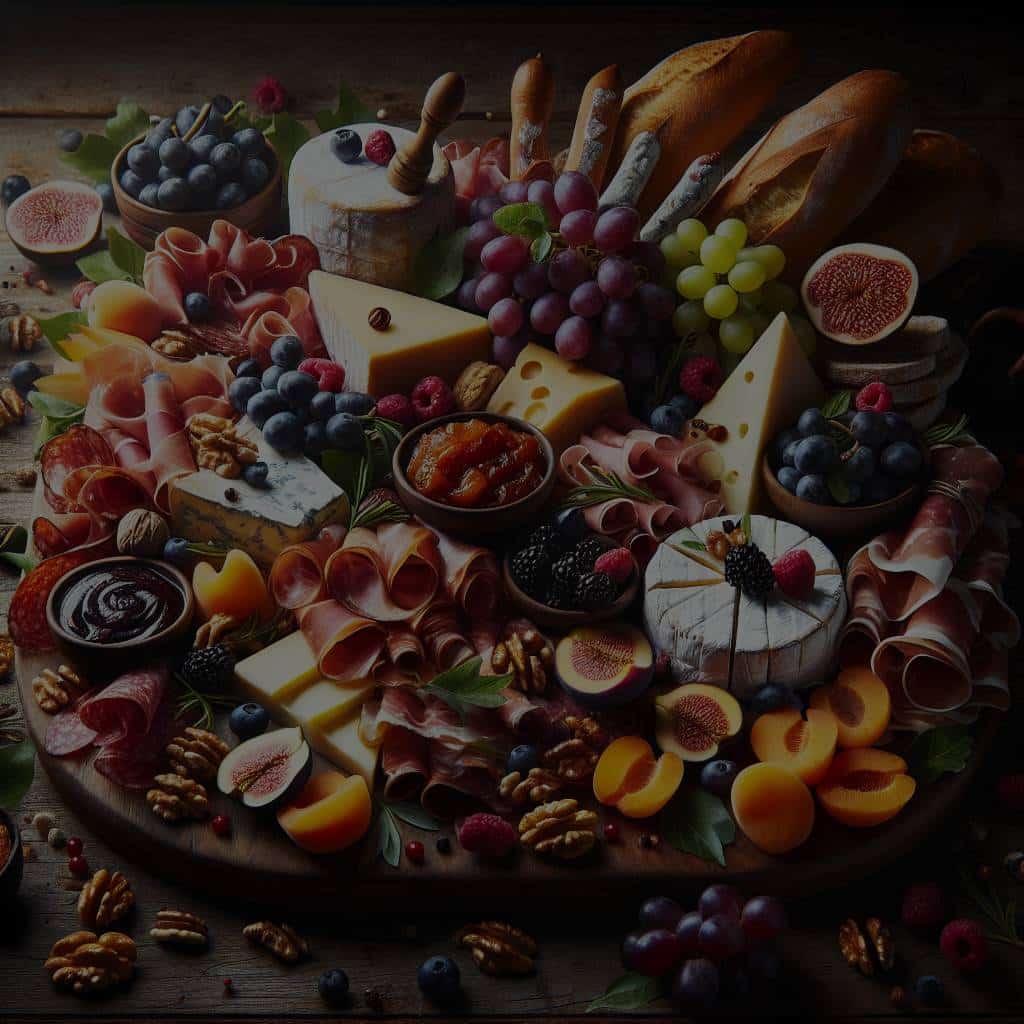What Are the Best Practices for Crafting a Gourmet Charcuterie Board?

Creating a gourmet charcuterie board is an art form in itself. It is a chance to showcase a variety of cheeses, meats, fruits, and other delicacies in a visually appealing and tasty way. The combinations are endless and the result can be a stunning centerpiece for any gathering. This article will guide you through the various steps and items to include, to create your very own charcuterie masterpiece.
Choosing the Right Board
Before you start choosing your meats and cheeses, you need to consider the foundation of your gourmet charcuterie board – the board itself. The kind of board you use can make a significant difference to the overall appeal of your charcuterie display.
Also read : Can You Prepare a Gourmet Cornish Hen with a Lavender and Honey Glaze?
There are a variety of boards available, from wooden and marble to slate and ceramic. A rectangular wooden board is a classic choice, offering a warm, rustic appeal. They are also easy to clean and maintain. Marble or slate boards, on the other hand, can add a touch of elegance and sophistication, but they can be heavier and potentially more fragile.
The size of your board will also depend on the number of guests you’re hosting. For a small gathering of four, a 12-inch board will suffice, while for larger parties, you may need a board that’s 18 inches or larger.
Have you seen this : How to Create an Authentic Japanese Matcha Tea Ceremony at Home?
Selecting the Right Cheeses
Cheese is a staple in any charcuterie board, and the right selection can make a world of difference. Aim for a mix of various textures and flavors.
You could include a creamy brie or camembert, a firm cheddar or gruyere, and a crumbly blue or gorgonzola. If you have guests with specific dietary preferences, consider including vegan or lactose-free options.
Remember, cheese is best served at room temperature, so take them out of the fridge at least an hour before your guests arrive. You will also need a different knife for each cheese to avoid mixing flavors.
Curating the Perfect Meats
The charcuterie part of the board refers to the selection of cured meats that you will include. Like with the cheeses, aim for variety.
Include a mix of hard salami, prosciutto, and other cured sausages. Some people also like to add pâtés or terrines.
It’s important to remember that some meats, like prosciutto, are quite salty, so balance it out with other ingredients on the board.
Adding Fruits, Nuts, and Other Treats
No charcuterie board is complete without a selection of fruits, nuts, and other treats. These not only add color and texture to your board but also provide a refreshing contrast to the rich flavors of the cheeses and meats.
Fresh fruits like grapes, figs, and berries are perfect accompaniments. Dried fruits like apricots and dates also work well.
Nuts such as almonds, walnuts, or pistachios can add a delightful crunch. And don’t forget to include olives – a classic accompaniment to charcuterie.
For a little something extra, consider adding some honey or a fruit jam for a sweet contrast.
The Importance of Breads and Crackers
Your guests will need something to pile those delicious cheeses and meats onto, and that’s where bread and crackers come in.
Include a mix of different types of crackers – some plain, some flavored. You can also add slices of baguette or a hearty whole grain bread.
Remember, the bread and crackers should complement the other flavors on the board, not overpower them. So, go easy on the heavily seasoned varieties.
By following these steps and tips, you can create a charcuterie board that’s not only visually stunning but also a delight for the taste buds. The key is balance – in colors, textures, and flavors. Don’t be afraid to experiment and most of all, have fun with it!
Arranging the Epic Charcuterie Board
Now that you have all the components for your charcuterie board, the real fun begins – arranging it all on your board. The key to a successful arrangement is balance and variety, creating a visually appealing layout that invites your guests to dive in.
Start by placing the cheeses on the board. Spread them out to different corners and spaces so that they become the focal points of your board. Next, arrange the cured meats around the cheeses. You can fold salami slices into half or quarters for added visual interest.
The breads and crackers should be placed next to the cheeses and meats, as they act as the carriers for these delicious treats. You can stack them or fan them out for a more dynamic display.
Once the cheeses, meats, and breads are placed, fill in the gaps with your fruits and nuts. This will add color and texture to your cheese board. Remember to keep a balance of fresh and dried fruits for a range of flavors.
Last but not least, add the final touches. Drizzle some honey over the blue cheese, place a small bowl of olive oil for dipping, or sprinkle some fresh herbs for a hint of freshness. The goal is to create an abundant feast for the eyes, as well as the palate.
Perfecting and Serving your Charcuterie Board
The perfect charcuterie board is not just about the selection of cheeses, meats, and accompaniments. It is also about how it is served. Here are some tips to make sure your epic charcuterie board is enjoyed to the fullest.
Firstly, ensure you have the right serving tools. Each cheese should have its own knife to avoid cross-contamination of flavors. Small forks or picks can be used for picking up slices of meat, and spoons for any jams or honey.
Secondly, don’t forget the drinks. Pair your charcuterie board with a selection of wines or craft beers. A crisp, fruity white wine pairs well with soft, creamy cheeses, while bold, full-bodied reds complement stronger, aged cheeses.
Lastly, remember that a charcuterie board is best enjoyed fresh. Prepare it close to the time (minutes) you plan to serve it. This is especially important for cheeses, which should be brought to room temperature for the best flavor and texture.
Conclusion
Creating a gourmet charcuterie board is not just about the food; it’s about the experience. It’s about exploring different flavors and textures, engaging in conversation, and creating memorable moments. Whether you prefer a classic cheese and meat board, or a vegan-friendly version with a variety of spreads and dips, there’s no right or wrong way to do it. With these guidelines, you can confidently create an epic charcuterie board that your guests will talk about long after the party ends. Remember, the secret lies in quality ingredients, a balanced selection, and a visually appealing layout. Now it’s time to put on your creative hat, have fun with it, and enjoy the fruits of your labor. Happy hosting!
